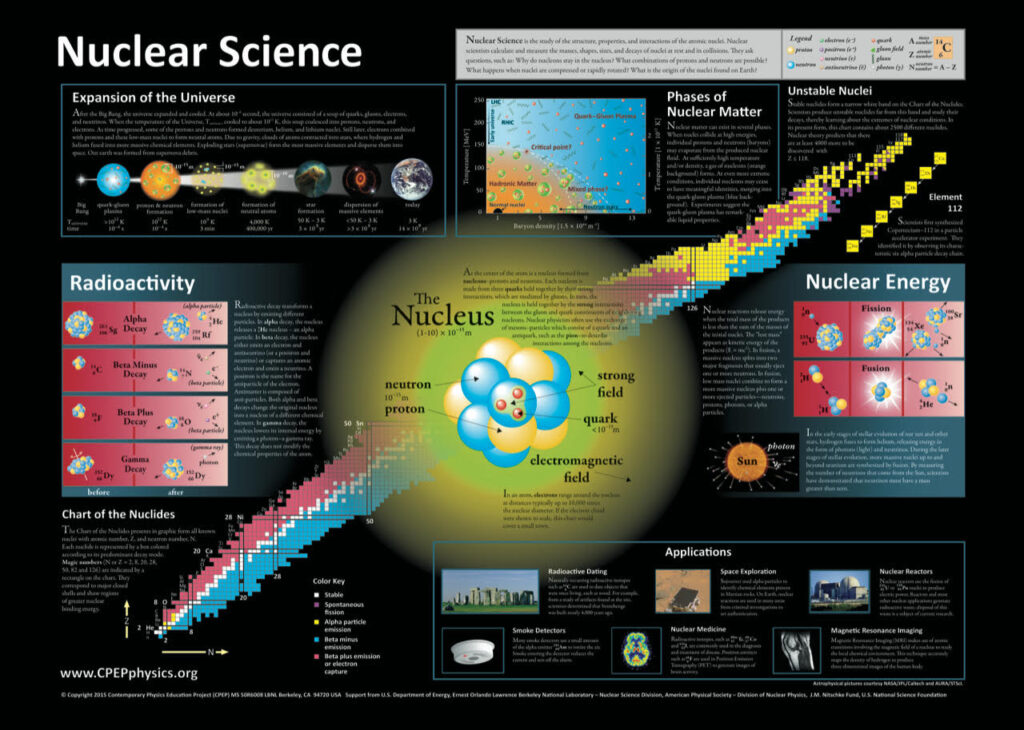Nuclear Science
Nuclear Chart
The colorful Nuclear Science Chart shows what are the parts of the nucleus, what are the heaviest elements, and how nuclear particles interact. It explains radioactive decay and the sources of nuclear energy. It examines nuclear matter that can only be made in the laboratory. It shows how matter evolved from the start of our Universe to present time. Finally, several examples of the applications of Nuclear Science are illustrated.
The chart includes results from nuclear interactions studied all over the world including the Large Hadron Collider at CERN, where the energy of the collisions are more than 100 times greater than those used to discover the Higgs boson. These results give us a glimpse at the Universe when it was many fractions of seconds old.

Created in conjunction with the Nuclear Science Wall Chart, this site a web version of A Teacher’s Guide to the Nuclear Science Wall Chart which is available on the web as PDF or on paper as a booklet.
Resources:
Nuclear Websites for Education:
The ABC’s of Nuclear Science is a brief introduction to Nuclear Science. We look at Antimatter, Beta rays, Cosmic connection and much more. Visit here and learn about radioactivity – alpha, beta and gamma decay. Find out the difference between fission and fusion. Learn about the structure of the atomic nucleus. Learn how elements on the earth were produced. Do you know that you are being bombarded constantly by nuclear radiation from the Cosmos? Discover if there are radioactive products found in a grocery store. Do you know if you have ever eaten radioactive food? Find out what materials are needed to shield us from alpha, beta, gamma, radiation. Discover what have we gained by its study.
Other Resources:
The Berkeley Lab Cosmic Ray Telescope Project
A wide spectrum of outreach programs, lesson plans and games targeted at age groups from K-12 to the general public. Teacher resources are also provided.
A brief introduction to Nuclear Science.
The Berkeley Lab Cosmic Ray Telescope Project.
